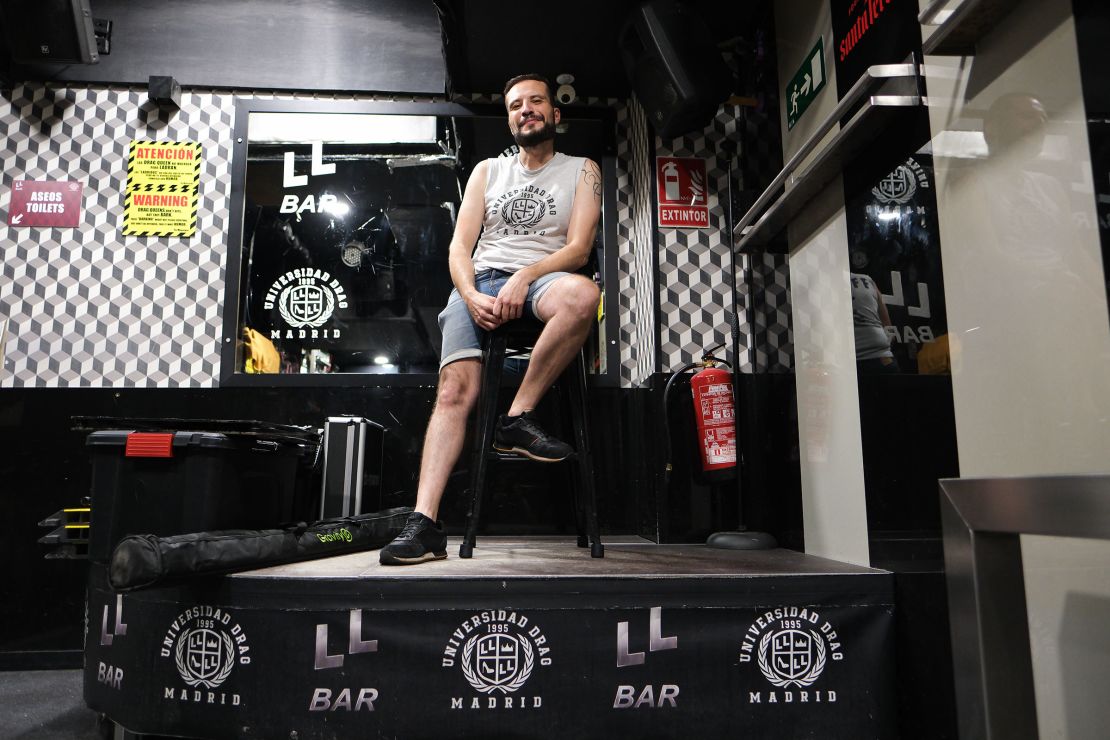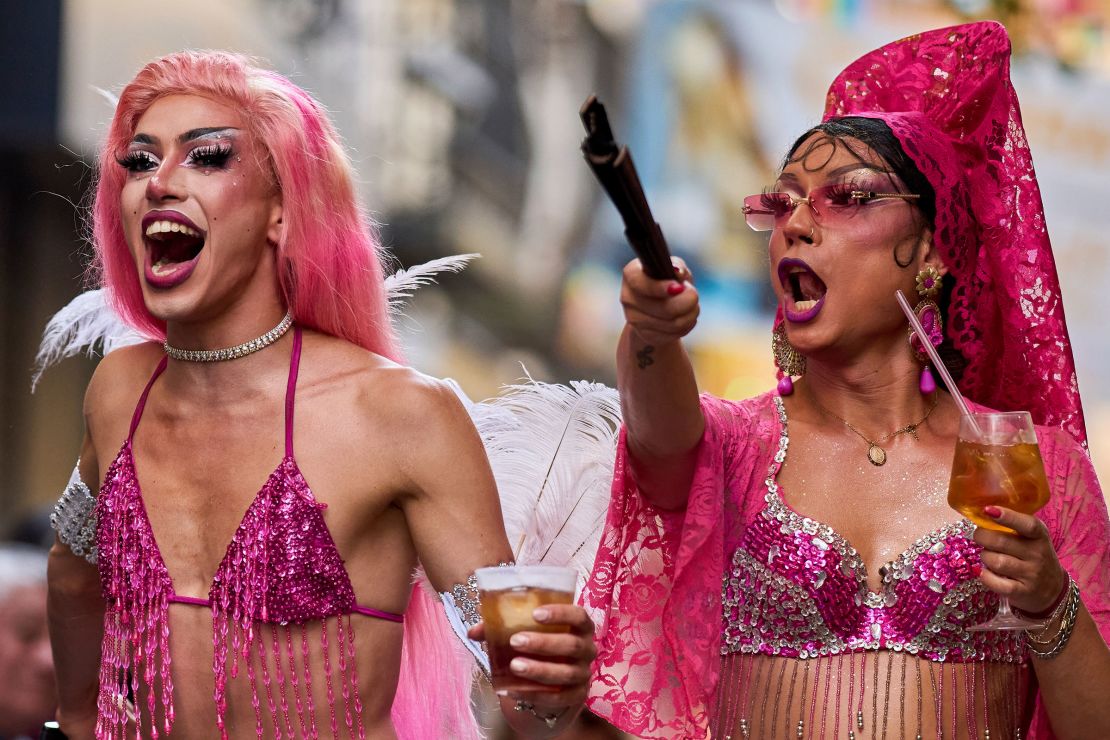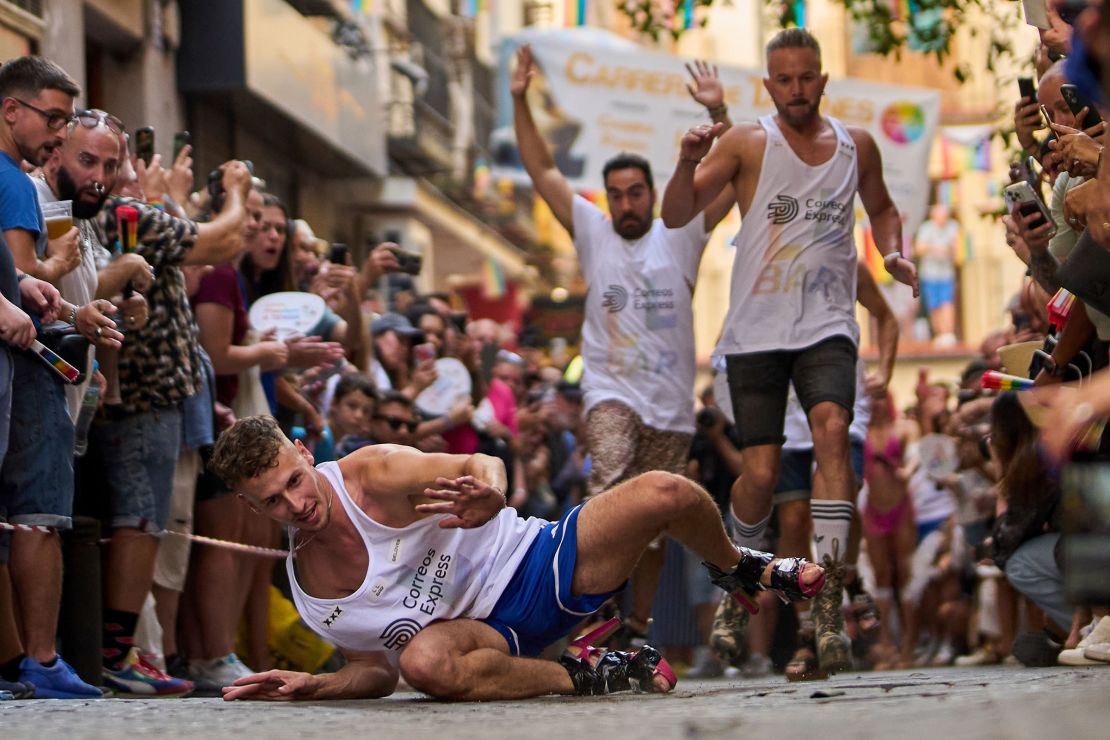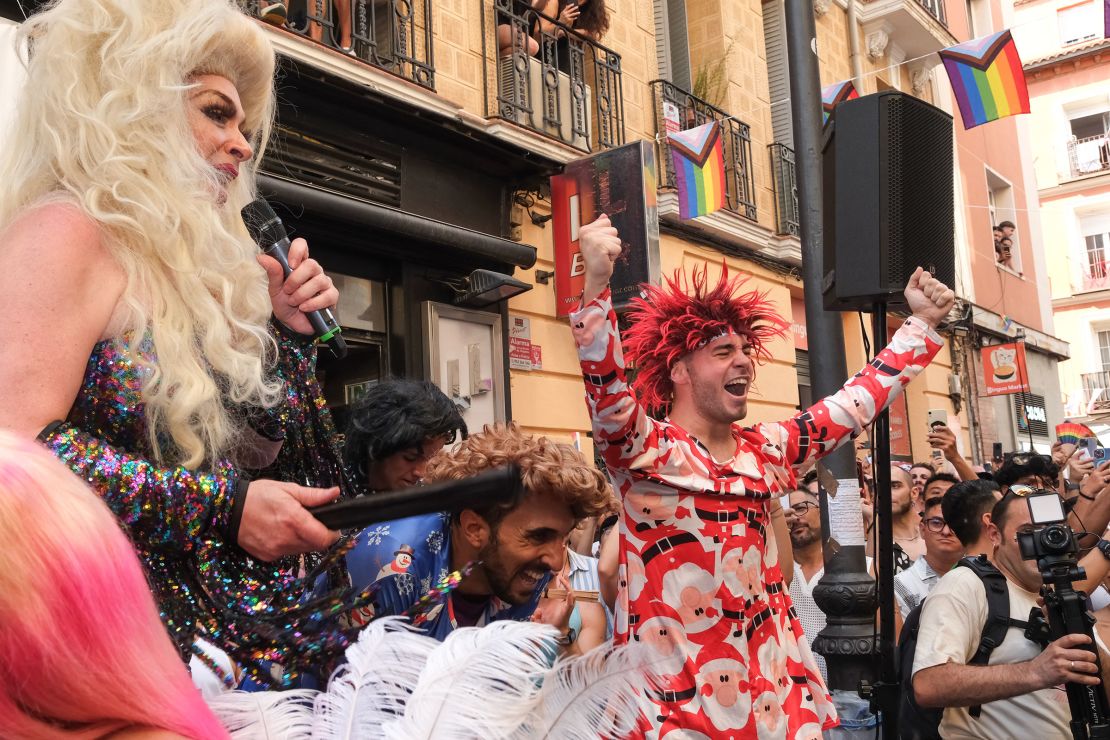Spectators gathered on the cobblestone streets of Madrid’s Chueca neighborhood this week to watch one of Spain’s most curious races: the “Carrera de Tacones,” or heel race.
Held annually as part of the city’s Pride celebrations, the race sees competitors — mostly men in towering heels — pound Calle de Pelayo, as racers have done each year for decades.
Whoops, cheers, and gasps were heard throughout the crowd as racers tried to outpace each other on Thursday — some stumbling ungracefully in unruly heels towards the finish line.
Despite the frenzy, an event of this scale and importance to Spain’s LGBTQ+ community takes careful planning. Especially when it’s become increasingly popular.
“There will be seven races in total, much more than in recent years,” explained David Bonillo, the event’s manager since 2014, who started work early on the day of the event at LL Bar, the iconic drag establishment that founded the competition in the late 1990s.
“Six qualification races at 6pm. Then, the winners will face-off in the grand finale.”

The Carrera de Tacones has rules, and the organizers are strict. In the back room of a neighboring sportswear shop, where runners check-in before the race, one staff member was found taping participants’ shoes tightly to their ankles with black duct tape to reduce the chances of sprains and breaks. Nearer to the store’s entrance, another was charged with measuring the heels with well-worn tape.
Runners face disqualification for any footwear under 10 cm high (about four inches).
“I’m sorry, but you’re not going to be able to race,” the woman measuring told a visibly disappointed racer, Edson Escolar, who was cradling a pair of blue stilettoes. “(It’s) two centimeters too short.”
Escolar told CNN that he had travelled from Guatemala to join the race. “In Guatemala, we have Pride but it’s nothing like this. People there still look at you funny if you wear feminine clothes. Here, I feel so free.”
“Maybe they’ll let me race if I ask again nicely,” he said hopefully with a smile.
But Escolar was nowhere to be found at the starting line.
“We have a couple of rules to keep the race fair,” said Bonillo. “It’s important to maintain them so we can continue to organize this special tradition for years to come.”

Growing pride
There are few in Spain who know more about the race’s humble beginnings than the drag queen known as Chumina Power. The singer and comedian is one of the most well-known faces in Chueca. This year, she presented the race with a mix of singing, dancing and commentary from a small platform near the finish line.
Power attended the event’s first ever race and began working as a drag performer at LL Bar a few years later.
“The high heel race has been going on for 30 years, but at first, it was a tiny event with just a few people,” she recalled. “Pride itself was also small. The first celebrations in this country took place across only two small streets here, and Calle de Pelayo was one of them.”
“Most people didn’t come to Pride to demonstrate because it was still frowned upon back then,” she said. “But the race grew with Madrid Pride, (which is) now one of the most important festivals in Spain.”
Known as “Orgullo Gay de Madrid,” Madrid Pride began as a political demonstration in 1978. In 2019 it became Europe’s largest Pride celebration, drawing around two million visitors annually.

As Power returned to the stage, racers began their final stretches. Anticipation was growing in the crowd. People started to huddle closer to the edge of the makeshift running track.
Each of the qualifying heats featured a mix of experience and youth. Some runners were anxious and quiet. Others joked together, drinks in hand.
Brian Healy, originally from Ireland, has been living in Madrid for seven years. “I’ve competed every year since 2018 and I love it,” he said. “I bought these shoes online from China, and something felt different when I put them on,” he continued, easing himself down to the ground to stretch.
“They were so cheap they didn’t even have a left and right one! They were both the same, but I’ve kind of got used to it now,” he joked.

For some like Pablo Lopez, who chose a long, loose pair of black leather boots, it was their first race. “I’m really scared,” Lopez said with a shy smile. “I practiced a little bit at home, walking and running slowly, but the ground is different here.”
And before the final race, another problem emerged: shoe fatigue. At one point, a finalist lifted their leg to reveal their bloodied toes and the remains of a shredded shoe.
For the rest of the finalists, there was a surprise in store.
All six would have to make a stop to change into a long dress, don a wig, and carry a handbag filled with bricks to the finish line on Power’s stage.
The final race couldn’t have been closer. The first and second place-winners were separated by less than a second.
“This was so much fun, and I’m so pleased to have won it,” said Raul Prieto, who had travelled to Madrid for the race from his hometown of Bilbao. Clutching a large check for €350 (about $412), he added: “I want to run this race every year for the rest of time!”




